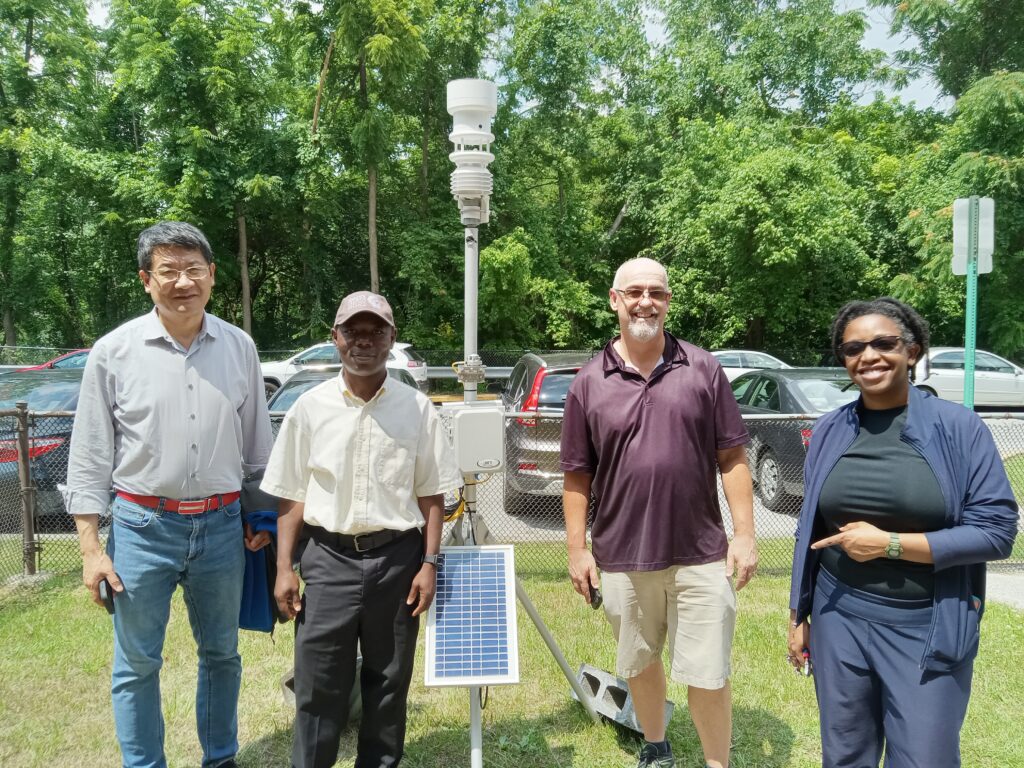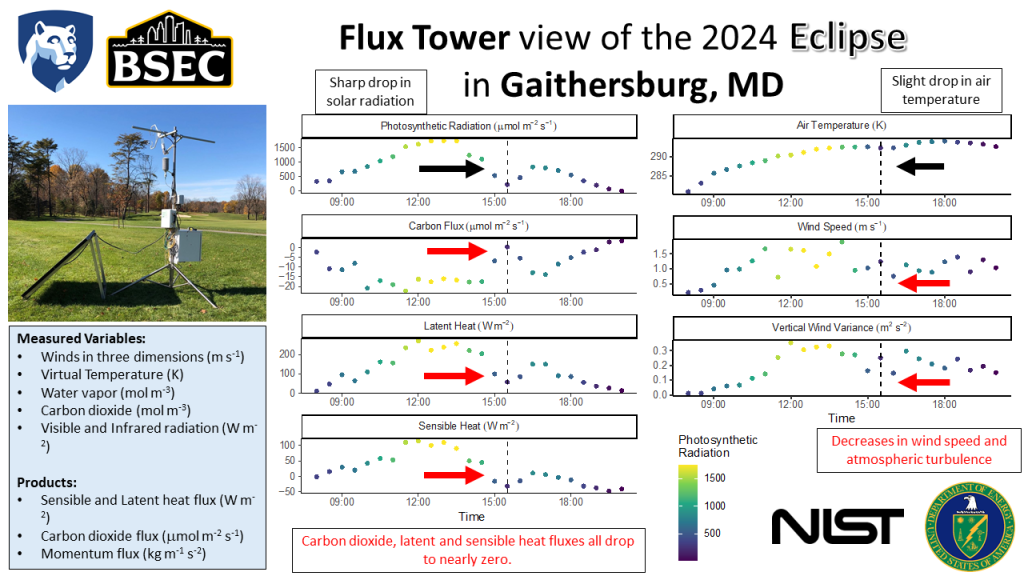
Why study atmospheric dynamics?
Weather in cities isn’t well understood. Cities are particularly complex ecosystems and generally less studied, so we lack the information needed to develop and evaluate methods to address extreme heat, air pollution, and flooding in Baltimore and other cities. This team is working to understand the mechanisms that explain changes in the weather over time and location—more specifically, air temperature, humidity, wind, and rainfall. They do this through data collection and through computer programs that can accurately model the weather they measure and predict changes due to climate change. Based on such modeling, the team will propose actions to minimize the impact of climate change.
How do the issues you study show up in Baltimore?
There are currently limited observations of weather conditions within Baltimore, especially in underserved neighborhoods. This severely limits our ability to quantify differences between neighborhoods, understand the cause of any variations, and evaluate how well computer models can capture these variations in heat, flooding, and air quality. Computer models that can adequately capture details of weather within Baltimore are needed to predict the likely impact of climate change on Baltimore and how well proposed heat, air quality, or flooding solutions will work.
Guiding Questions for Research
- How do changes to elements of Baltimore’s landscape, such as trees, parks, and buildings, change specific aspects of weather (such as temperature, humidity, and rainfall) and mixing of air pollutants?
- How will changes in climate alter weather and air pollution in Baltimore and the relationship between weather and air pollution and the landscape?
Sample Project
Example I: Observations
A network of instruments is measuring variations in weather and heat and pollutant mixing across Baltimore. The goal is to quantify variations in time and space, identify what causes these variations, and evaluate the performance of different computer models. This network includes more than 20 weather station sensors that measure weather at ground level and several different instruments that measure variations in weather and mixing above ground level. These include a surface instrument that sends pulses of light up into the atmosphere to measure vertical variations in air movements, a group of instruments placed at different heights on two communication towers, and regular launches of small balloons that make measurements several miles into the atmosphere.
Team Co-Leads
- Ying Pan, Pennsylvania State University
- Darryn Waugh, Johns Hopkins University


